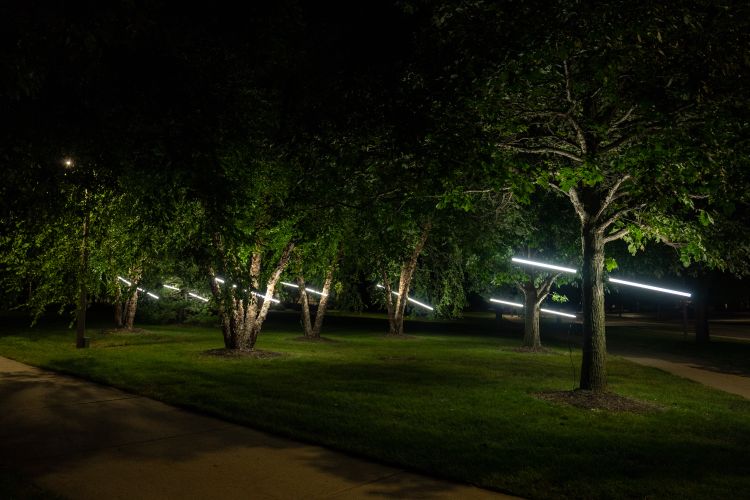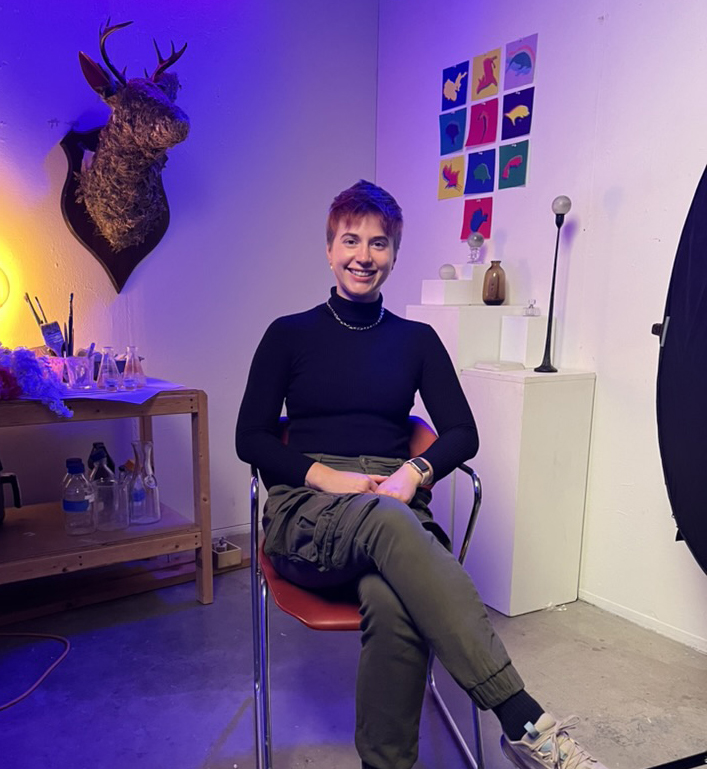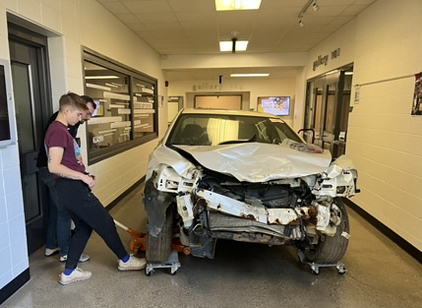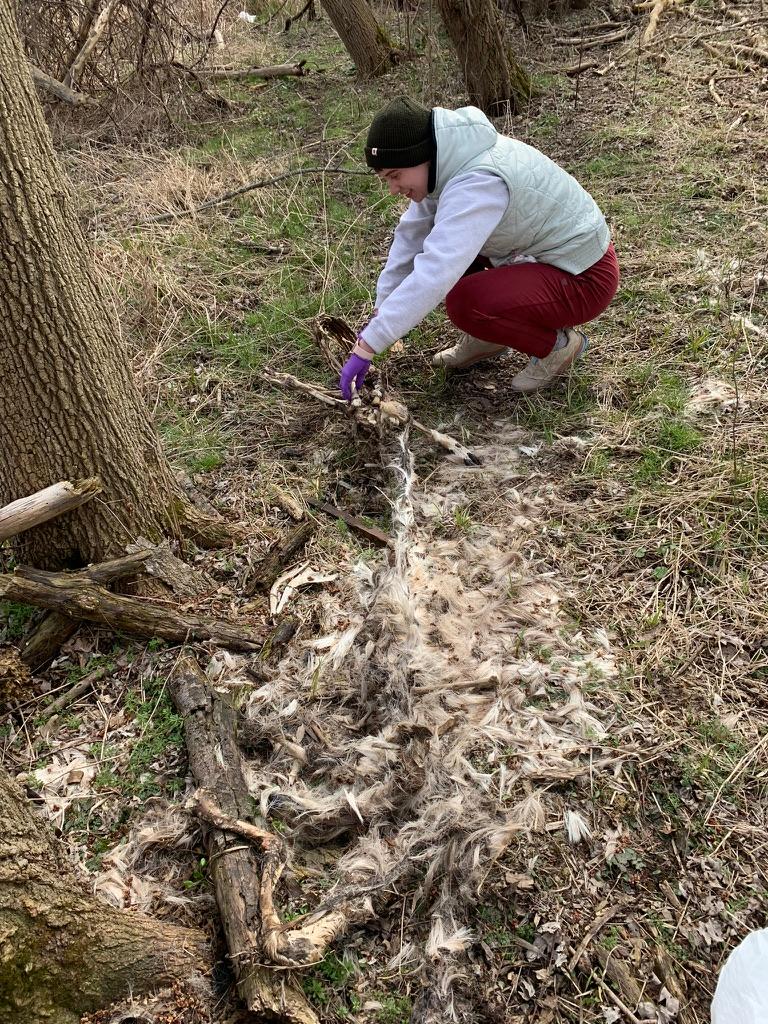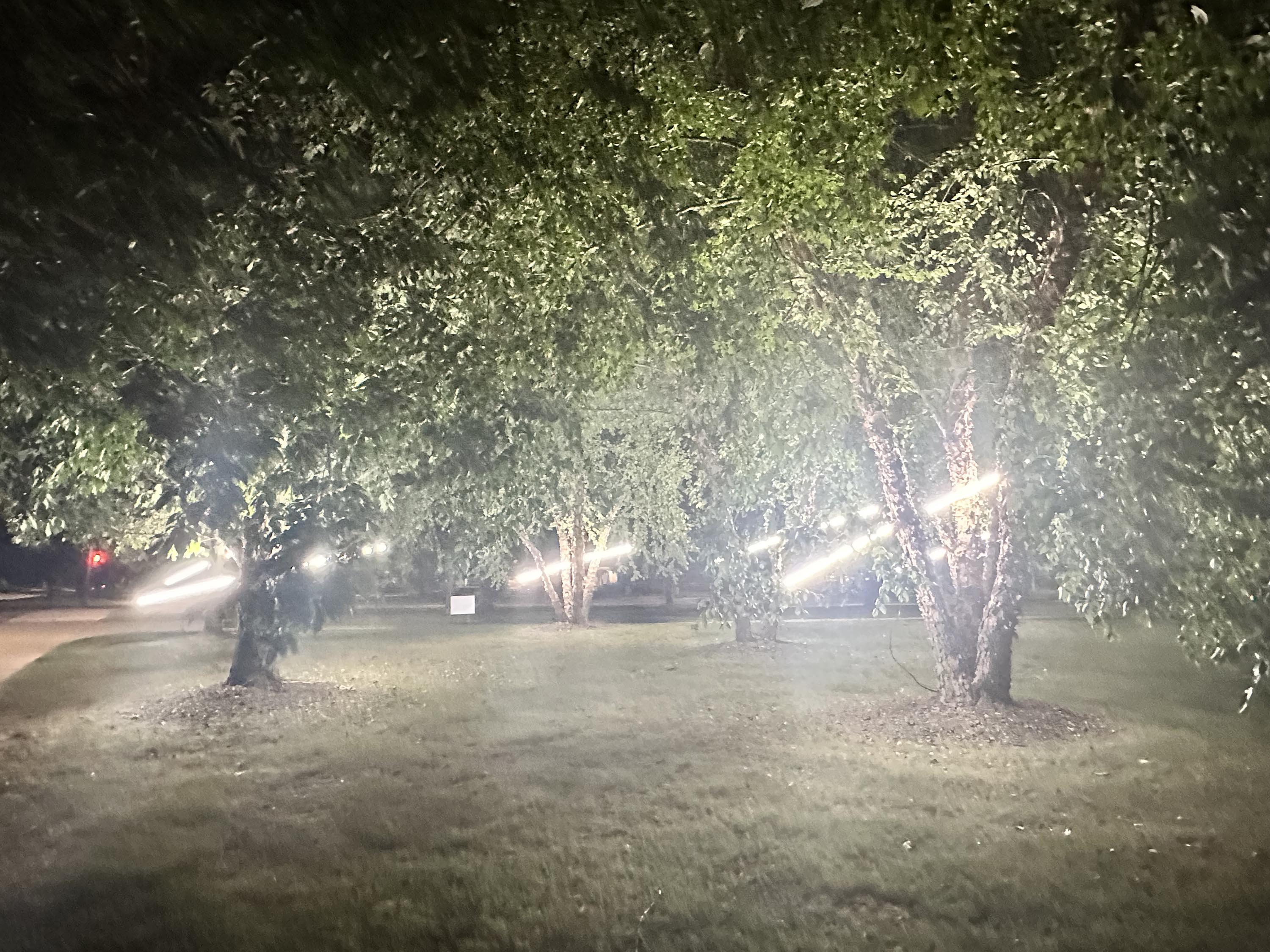Doctoral student Hailey Becker has never exactly colored inside the lines or followed the status quo. In fact, Becker recalls her high school math teacher once telling her, “the best job for you probably doesn’t exist yet.”
Embracing her trailblazing nature, Becker is now embarking on a first-of-its kind at Michigan State University dual program that combines a Master of Fine Art degree in Studio Art, paired with a Ph.D. in Forestry.
Becker first received her Bachelor of Science degree in Metallurgical Engineering from the University of Alabama, where she also excelled in jazz saxophone. She decided during her senior year to pursue a master’s degree, after a professor told her she would be frustrated in the workforce without an advanced degree.
This led Becker to MSU in 2020 where she first embarked on a Master of Science in Materials Science and Engineering. Becker was beginning to fear losing a connection with music and the arts community, so she decided to pursue a degree in music as well.
As with many students from a large variety of majors, the COVID-19 pandemic drastically affected Becker’s music program. Shifting her plans, and focusing her studies solely on materials science, she began noticing things — like the beauty in how metals fracture in specific ways.
Becker’s interest in science communication began to grow, and she began developing a knowledge base that led beyond strict scientific research, which ultimately lead her to art classes. One specific class in particular, Poetic Computation, taught by Professor Abhishek Narula, proved to be a game changer. Narula has a masters degree in electrical engineering and a masters of fine arts. This course was Becker’s first exposure to electronic art and intermedia, the study of the in-betweenness of things. Seeing the way he was able to mix the disciplines in a seamless way sparked Becker’s interest in an MFA. Professor Adam Brown was in the process of developing an MFA (the terminal degree in Art) alongside a Ph.D., exploring the idea of how this kind of pairing would inform both research and the art world.
An MFA is the terminal degree in the United States, but not in Europe. In Europe, the terminal art degree is a doctorate. Therefore, Brown wanted to explore having students work on their MFA alongside a Ph.D. in another field, making them more competitive in the job market, and understanding how living in multiple disciplines informed their artistic and scholastic endeavors.
Becker flourished in this space, having a rich background of scientific research, as well as a deep connection with the art and cultural community around her.
“A lot of my artistic practice, unintentionally, has strong scientific components, even if it’s just methodology,” said Becker.
Having always had a profound interest in natural resources, Becker chose forestry for her Ph.D. program. When asked what ultimately led to this choice, she reflected “like materials science, it sounds really specific and people have preconceived ideas of what it actually means, but it is actually quite diverse and there are so many avenues to explore.”
Becker currently works in two different labs. Mojgan Nejad’s Sustainable Bioproducts Lab allows her to keep interacting with materials science. Specifically, a biocomposite project where the team is attempting to create 100% fully bio-based epoxy resin from lignin, a byproduct of trees.
Becker also works in the Silver Lab, led by Emily Silver, focusing on human dimensions of natural resources. “I am interested in tensions between the human side and the objective side. Nothing we really do is objective,” said Becker. “This kind of program allows me to explore these topics at different paces. I can dig into one topic that’s so niche for so long. The art side lets me move out a bit, and science is more focused.”
“Hailey provides an invaluable perspective to our MSU forestry community. Her work informs better science communication and will provide new and exciting ways for people to engage with trees and forests. We are both learning from each other as she contributes to our forestry social science team,” said Silver.
Becker and fellow artist Patrick Taylor’s recent art installation, which was located on MSU’s campus, explored the complex relationship between humans and nature, specifically trees, is titled “Where the Light Gets In.” The art display featured LED lights mounted on trees, in a way that looks like they are beams of light piercing the trees. The title of the piece, which is inspired by a lyric by prolific songwriter and poet Leonard Cohen, refers to the way that trauma can actually open your eyes to positive aspects of the world: “there’s a crack in everything; that’s where the light gets in.”
After the installation closed, the trees used were removed due to new construction, and the piece explores the complex practice of tree removal. The signage at the installation challenges the viewer: “Many people, especially in urban areas, oppose tree removal due to a lack of understanding of forest management techniques and diminished trust in forest managers. Is opposing the “death” of a tree a step toward saving nature, or simply an attempt to purge us of our guilt over the collective human role in climate change? Can ritualizing the necessary cutting down of trees help us work through our grief and take steps toward a better future?” (Becker, Taylor.)
Becker would like to eventually work in academia, someday rising to the rank of dean or provost. “I’d like to help set the academic mission of a school,” said Becker. “Individual paths in education are individual endeavors. It’s personal. This program sets me up to help other students navigate academia, now having an expansive understanding of where people are coming from.”
This story originally appeared on the Department of Forestry website.
